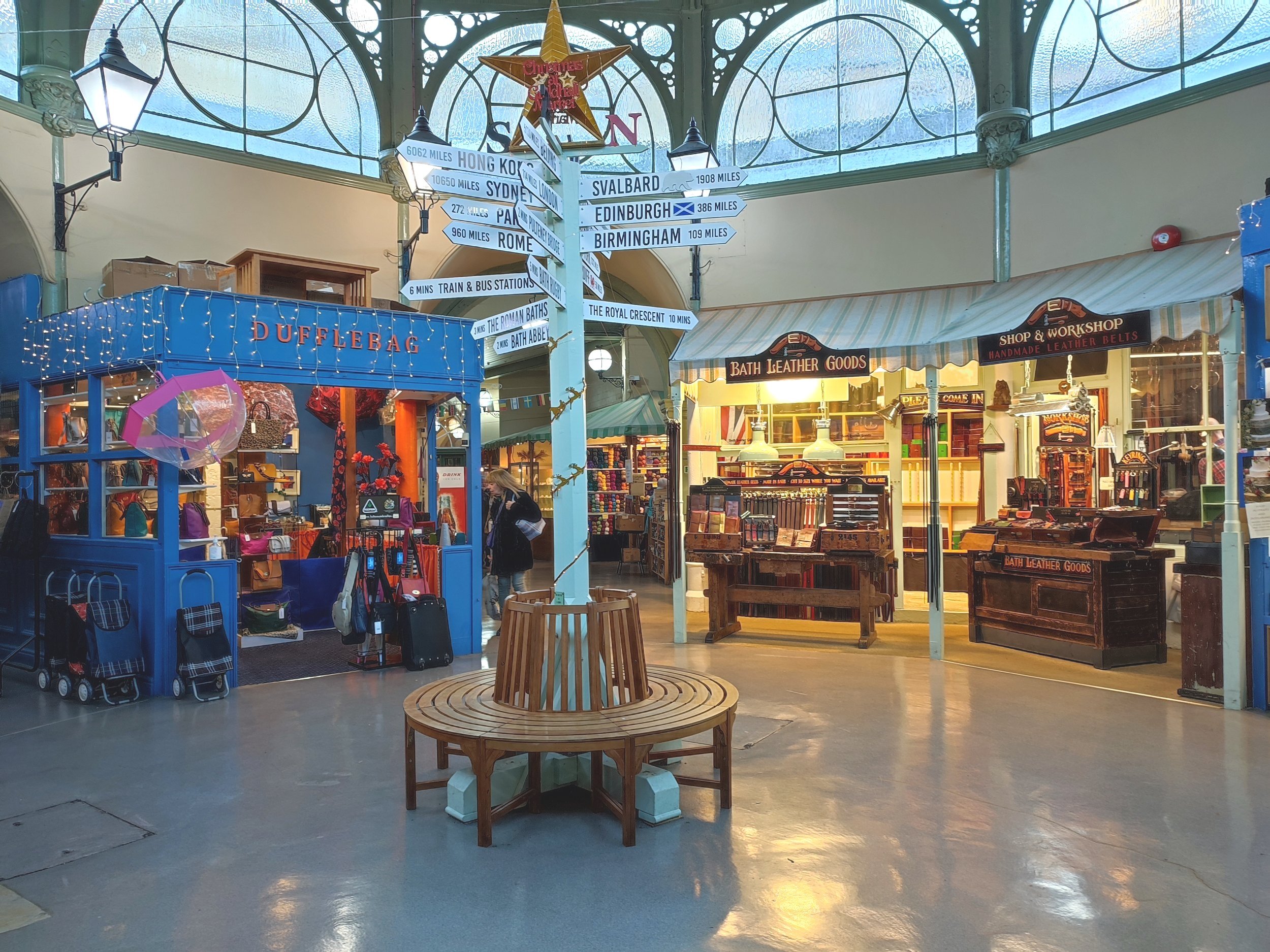Therapeutic places
Bath is a beautiful city, but it is easy to imagine that it is frozen in time. I was excited to find the ‘Architecture Is’ group discussing how to it could become even better.
Robert Delius and Lucy Barron of ‘Architecture Is’
(Other members of the ‘Architecture Is’ group are Funda Kemal and Amy Frost.)
Bath from Alexandra Park
‘Architecture Is’ is a group of individuals, who care passionately about Bath. We're all from a built environment background. We're a mixture of urban designers, architects and Amy, who is a museum curator with a wide understanding of the fabric and history of Bath.
Between us, we are interested in provoking debate and discussion about Bath’s built environment and how it could become as good as it can be. And we do that by putting on exhibitions, holding festivals, debates and talks. We try to engage with the professional design community, but also with the public and feed what comes out of public events to policy makers, decision makers and design professionals.
We’re not about giving answers, more about facilitating people to have a say. We sit in-between, enabling people to understand more about the built environment around them.
We had a festival a few years ago called The Therapeutic City where we explored how a city can be a force for good in terms of people's health and well-being. In fact, our group is about much more than buildings. It's about places. All the bits in between as well as the buildings themselves.
Placemaking
Abbey Square, Bath
Placemaking is about creating places where people want to spend time, want to interact with their immediate environment and with other people. Placemaking is also about identity so it's about creating places with a distinctive character, which makes them different from other places.
You can talk about placemaking at the scale of cities. Why Bath feels a different place to, say, Bristol.
Guildhall Market Bath
But also, within Bath, different parts of the city have a different character. It's trying to move away from that kind of ‘anywhere architecture’ so that you feel like you are in a place with a real sense of character to it. Like the Guildhall Market, for example.
It's about giving a purpose to spaces that don't currently have one - spaces left over or just for passing through.
Wild Walcot community garden, Walcot Street Bath
There’s an element as well that true placemaking provides a democratic, accessible space. The sort of place where anyone from any walk of life or background wants to go to and use in whatever way they want.
Guerilla future
We’ve concentrated on having events in the past. Now we're going more guerrilla. We like the idea of being a bit provocative because it's all about generating thought and discussion. Doing something which is a surprise is quite a good tactic sometimes.
Whatever we do, there will always be an element of learning. Each new thing we do is based upon what we've learned from the previous one.
We tend to meet in a cafe in between events and a plan is formulated. It's a small group and things can go in different directions. There is no big five-year plan and we're not waiting to be asked to do something.
The City Council is very constrained by what its function is, and what it should be seen to be doing. We have the space to ask difficult questions. We have the freedom to be a bit provocative sometimes.
Well-being
Pulteney Weir, Bath
We've been moving towards ‘well-being’ since the Therapeutic City festival. We understand that the history of the Baths, the Georgian architecture, and the spaces in between all relate back to well-being. The Georgian architecture was created because of the attraction of the hot springs. People came here to take the cure, which included promenading and exercising. So, as well as the Georgian buildings, Bath provided parks and countryside for visitors to exercise and to be outside in nature.
That's what well-being meant back then. What does it mean now? What should a city which is all about well-being, particularly a Spa city, be doing today?
Laura Fountain, Bath
Bath has this huge water heritage because of its Spa and hot springs. But today there's very little evidence of water in the city. If you come to Bath as a visitor, you might expect that there would be lots of fountains. Even the welcome signs outside of the city have pictures of fountains on them. But there's nothing. There's a huge opportunity for Bath to celebrate its Spa heritage by introducing the sight and sound of water.
This would be great for telling the story of Bath to visitors but also creating a sense of well-being for residents. It is proven that being near to water can really help your health and comfort.
Well-being is a very big idea. The official definition is about being comfortable, healthy, and happy. But when you look at it in the urban realm it can be anything from having no cars around you, no unpleasant noise, to even the look and feel of building materials.
Well-being is very topical today because mental health is obviously a huge problem. There's loneliness, anxiety, all sorts of other issues. We also have record levels of obesity and other problems. We've got the NHS under huge strain. There's lots of evidence to show that people’s health is affected by where they live and the spaces around them.
The possibility that a city can be good for your mental and physical well-being is very powerful.
November 2022





